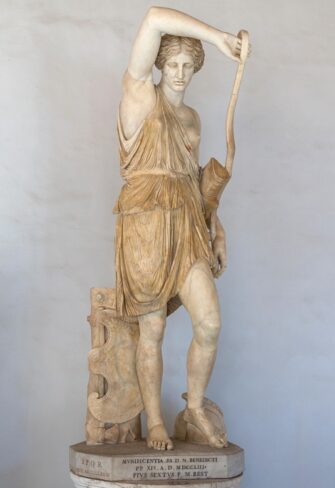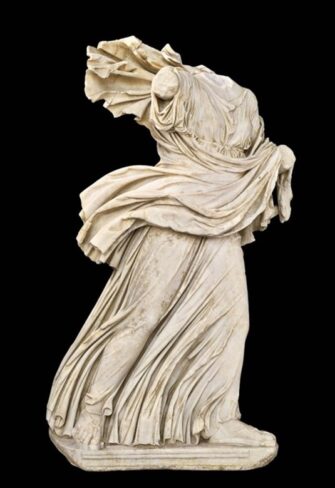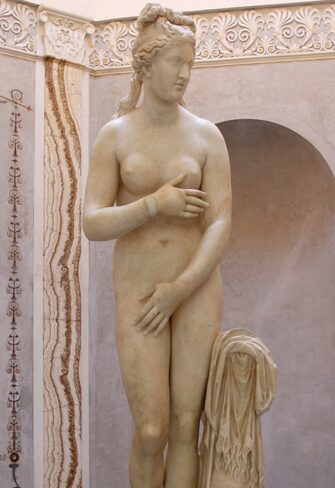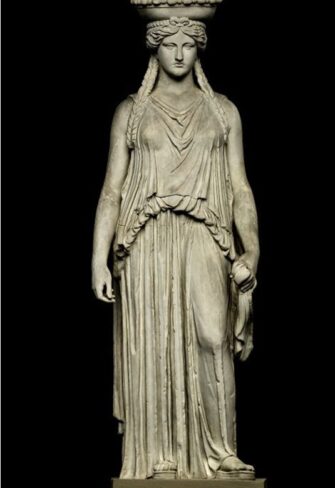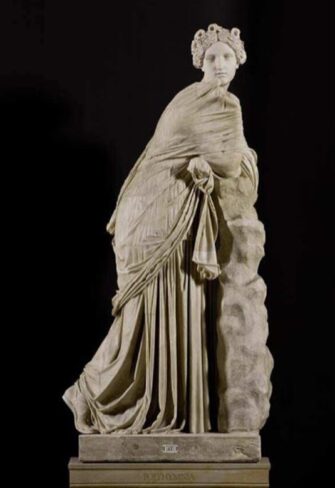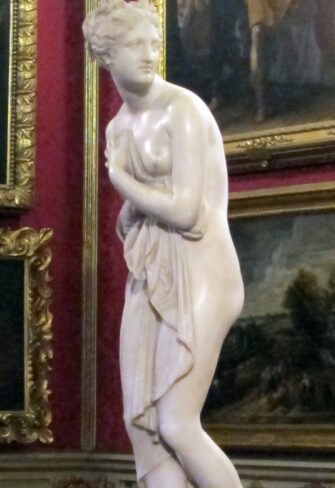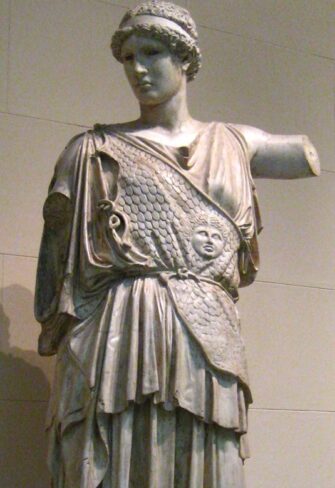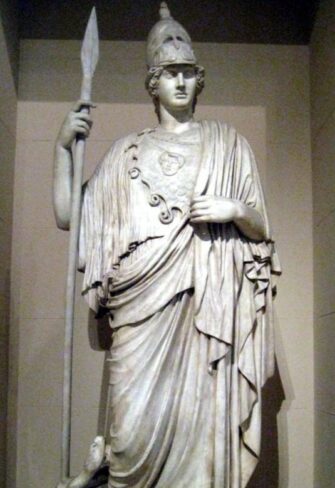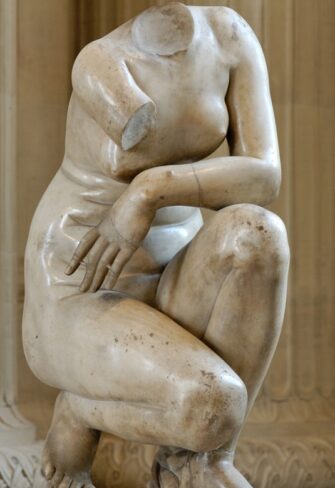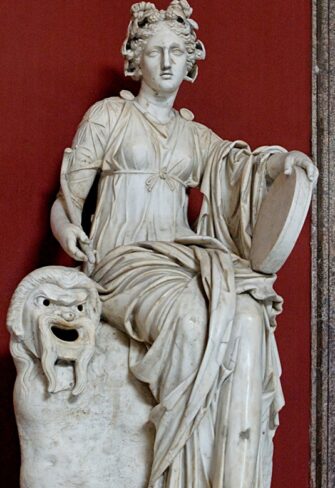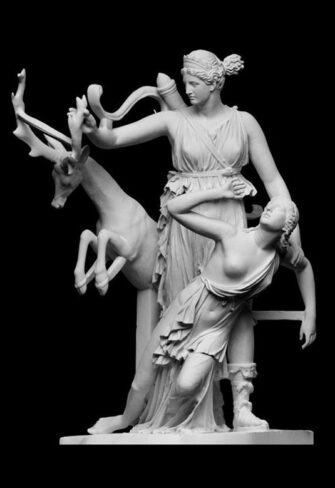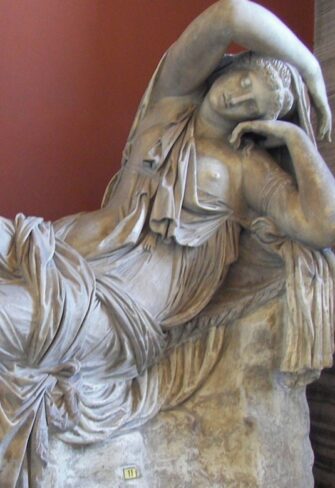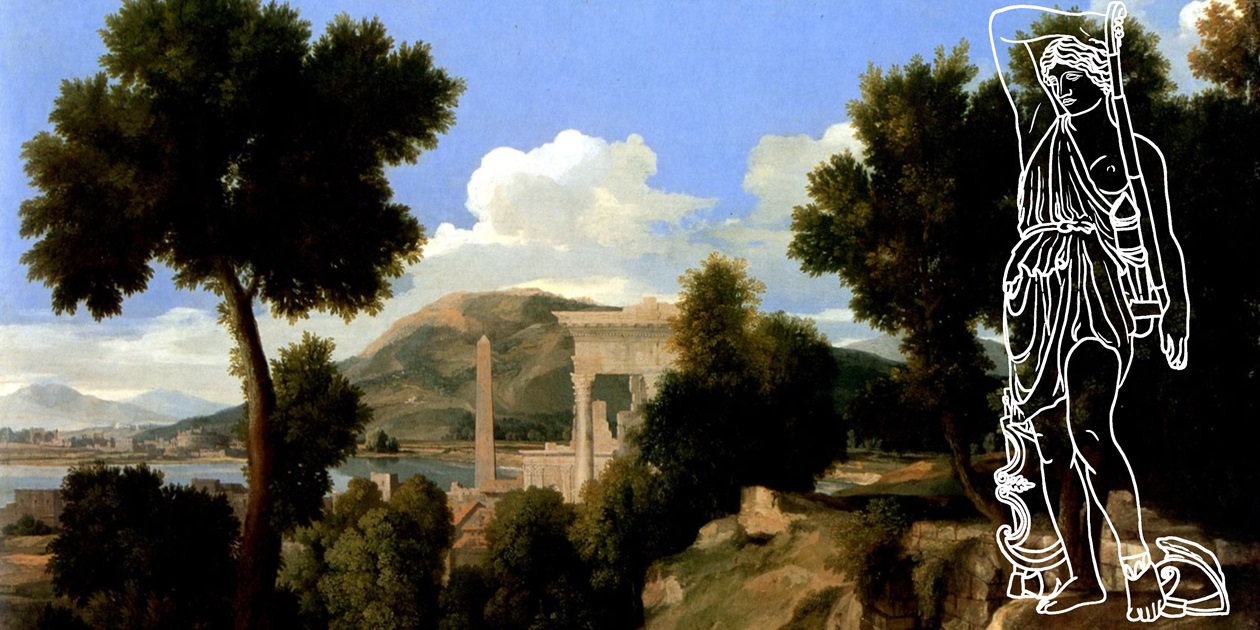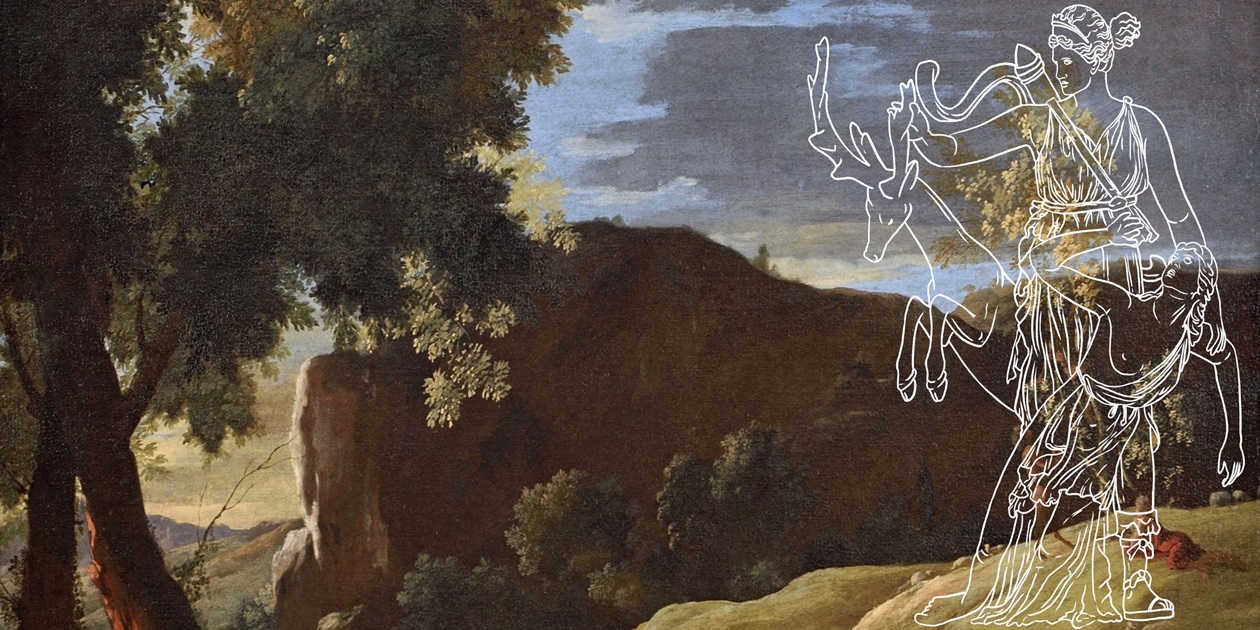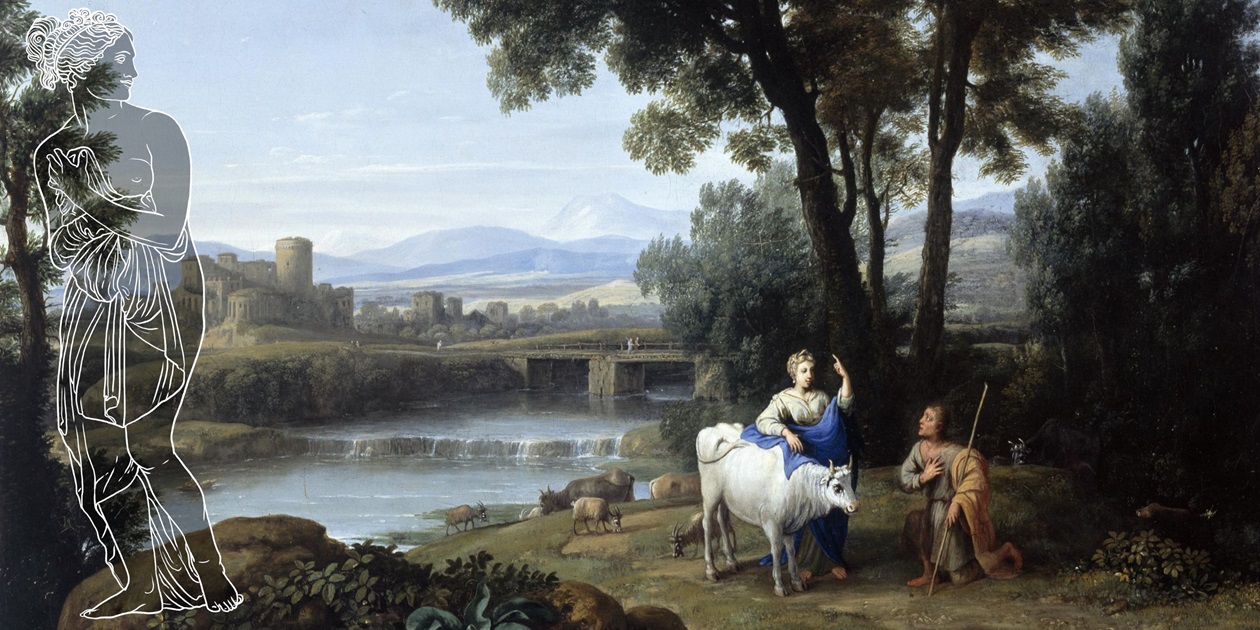Female Statues
Showing all 12 results
-
Amazon Mattei
£52,900.00 -
Chiaramonti Niobid
£52,900.00 -
Capitoline Venus
£34,400.00 -
Erechtheion Caryatid
£52,900.00 -
Polyhymnia Muse
£34,400.00 -
Venus Italica by Canova
£34,400.00 -
Lemnian Athena
£43,800.00 -
Athena Giustiniani
£57,400.00 -
Crouching Venus
£22,100.00 -
Seated Muse Thalia
£52,900.00 -
Artemis and Iphigeneia
£57,400.00 -
Sleeping Ariadne
£57,400.00
The allure of Ancient Female Statues: A Source of Inspiration for Art Acquisition
Antiquity stands as a beacon of remarkable artistry, with the depiction of women in sculpture occupying a pivotal role. Primarily featuring mythological goddesses, these sculptures are aesthetic marvels reflecting the cultural, social, and religious significance of women in ancient societies. Many of these exquisite creations, available online in our store, are rendered as life-size bronze casts of museum quality. Immerse yourself in the realms of myth and beauty by acquiring a replica statue of a woman from our collection.
Contrasting Depictions: Antique Statues of Women versus Men
One of the captivating facets of ancient art lies in the contrasting portrayal of women compared to men. While men often embody heroes, gods, and kings exuding power and strength through unclothed, muscular forms, women are depicted with softer curves and graceful postures, often clad in garments. Their statues accentuate grace and beauty, portraying a diverse array of roles from vengeful Olympian goddesses to muses of fine arts and sciences. The warrior women of the Amazons stand as a perennial theme in ancient statues of women, juxtaposed against the heroic depictions of men. Medea is a Renaissance master of all the arts, experienced in all the tricks of politics, the exercise of power and at the same time devoted and unconditional in love.
Acquiring Antique Women Statues: Clothed and Unclothed Representations
Ancient statues of women predominantly feature them clothed, marking a departure from the unclothed depictions of men. However, unclothed ancient statues of women in antiquity were sensational, scandalous, and tourist attractions. The fame of the Venus of Knidos, though atypical of most ancient female statues, stemmed precisely from this, establishing its own canon of forms.
Stylistic Evolution: Antique Statues of Women through Classical Antiquity
Ancient art traversed various stylistic periods, each imprinting its own artistic innovations on the portrayal of women. From the rigid and formal representations of the Archaic period to the heightened expressiveness and realism of the Classical era, and the intensified drama and emotionality of the Hellenistic period, the evolution of artistry manifested in the depiction of women. Explore our online store for a vast selection of antique replica female statues crafted from cast bronze, spanning these stylistic epochs.
Comparative Analysis: Greek and Roman Depictions of Women
Although Greece and Rome both belonged to the ancient world, there are still some striking differences between the Greek and Roman depictions of women. Greek statues are often characterised by a greater naturalness and grace, while Roman statues often show idealised and heroic representations. Furthermore, Greek statues often reflect mythological and religious themes, while Roman statues often depict political and historical figures.
Famous Ancients: Original Models for Replica Sculptures
The ‘Mattei Amazon Statue’ is the best-preserved marble copy of a lost bronze original by Phidias, which was created around 430 BC. The Roman marble statue, made at the time of Emperor Augustus, is 211 centimetres high and was discovered in 1770. The Mattei Amazon is named after the family that once owned it.
The ‘Niobide Chiaramonti’ is a 180 centimetre high statue of a fleeing young woman running away and is a Roman marble copy of a lost Greek bronze original. It depicts one of Niobe’s daughters trying to escape the arrows of Apollo and Artemis.
The ‘Capitoline Venus’ is a type of Venus statue, one of several types of Venus pudica (others include the Venus de’ Medici), of which several examples exist. The type is ultimately derived from the Aphrodite of Knidos, created by Praxiteles.
The ‘Caryatid of the Erechtheion’ carries the weight of history on her shoulders. As one of the famous supporting women of the Erechtheion in Athens, she symbolises the strength and elegance of ancient architecture.
‘Artemis and Iphigenia’. The Hellenistic statue group dates from around 125 B.C. It shows the goddess Artemis saving the young girl Iphigenia at the last minute by pulling her away from the altar on which she is to be sacrificed. Artemis grabs the antlers of a stag and drags the animal to the altar to be sacrificed instead of Iphigenia.
The ‘muses Thalia and Polyhymnia’ embody the fine arts and sciences. Thalia is the daughter of Zeus and Mnemosyne (memory) and is the muse of the light genre of comedy, poetry and song. Polyhymnia is the muse of sacred religious music and poetry. Polyhymnia is also considered the muse of thinkers and geometry, as she herself is such a deep thinker.
The ‘Venus Italica’ is a marble sculpture commissioned by Napoléon Bonaparte and created by the Italian sculptor Antonio Canova. Canova completed the original work in 1802 and modelled two further versions, which he finished in 1819.
The ‘Sleeping Ariadne’ rests gently and peacefully, wrapped up in her dreams and legends. It is a Roman-Hadrian work based on a Hellenistic bronze sculpture of the Pergamenian school from the 2nd century BC. The Roman marble version is considered one of the most famous sculptures of antiquity.
The ‘Lemnian Athena’. The sculptor of the Parthenon, Phidias, created this bronze Athena, which stood on the Acropolis in Athens. The statue was donated and paid for by a colony of Athenians on the island of Lemnos in the North Aegean. The statue should not be confused with the larger-than-life statue of Athena Parthenos by the same artist, which also stood on the Acropolis.
The ‘Pallas Athene Giustiniani’ is an Antonine Roman marble statue from around 100 AD, modelled on a Greek Hellenistic bronze sculpture of Pallas Athena from the late fifth to early fourth century BC. It was carved from the finest Parian marble.
The ‘Crouching Aphrodite’ is a Hellenistic model of Venus being surprised while bathing. The statue is attributed to the Hellenistic sculptor Doidalses. It is thought to have been created around 250 BC. Alongside the Venus of Knidos by Praxiteles, the sculpture represents another type of unclothed Aphrodite in ancient art.
Acquiring Antique Female Statues: Fulfilling Artistic Dreams
Lovers of antique statues of women can realise a dream with the purchase of replica bronze sculptures of women. Who wouldn’t want to have the 180 centimetre high statue of Niobide Chiaramonti in their garden? Who wouldn’t enjoy bronze statues of the muses Thalia and Polyhymnia in their gallery? All the female statues offered in our online shop are made as bronze casts from plaster casts of the originals in museum quality.



